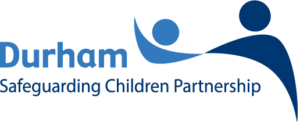Physical abuse is deliberately hurting a child causing injuries such as broken bones, cuts, bruising or burns. These injuries could be the result of hitting, having objects thrown at them, shaking, poisoning, burning or scalding, drowning, suffocating, or otherwise causing physical harm to a child or young person. Sometimes parents or carers may fabricate symptoms or induce illness.
Signs of physical abuse
Babies and small children
Signs which may suggest physical abuse to babies and small children:
- any bruising to a baby before they can walk
- bruising to the soft tissues of the body in a child who is either not independently mobile or in early mobility
Bruising in non-mobile children
Bruising in non-mobile children is rare and therefore there is a significant risk that bruising may indicate abusive or neglectful care. Unfortunately nationally and locally bruising is not always responded to appropriately by Health Visitors, Doctors, GPs and other health professionals. As a result a significant number of abusive events have been missed resulting in children being placed at risk, resulting in serious untoward incidents and serious case reviews.
The Bruising in Non-Mobile Children Protocol sets out to address this by requiring all professionals to refer bruising in non-mobile children for assessment by a Consultant Paediatrician and Social Care.
- Bruising in Non-Mobile Children Protocol.docx (on Tri.x)
- Bruising Information for Parents and Carers.pdf
Children and young people
Other signs which may suggest physical abuse to children and young people:
- multiple bruising on different areas of the body
- bruises which are in the shape of an object or hand
- bruises in places which are not likely to have happened during play such as back of the legs, abdomen, groin area
- bites – however, note it can be difficult to tell if bite marks are from a child or an adult
- fractures or broken bones – if the child is in pain, has swelling and discolouration over a bone or joint then this should be suspected
- burns or scalds – It may be difficult to identify between accidental and non-accidental burns and scalds but in general burns and scalds with clear outlines are of concern
ICON programme
Research points to persistent crying in babies being a potential trigger for some parents/care givers to lose control and shake a baby. It also shows that around 70% of babies who are shake are shaken by men. So any prevention programme should include male caregivers and use the best opportunities to reach them as well as support all parents/caregivers with information about crying and how to cope with a crying baby.
Intervention points
The ICON parenting support programme consists of five core touchpoints:
- At hospital or home, following birth and prior to discharge.
- Within the first 10 days at home by the community midwife.
- Within the first 14 days at home by the health visitor.
- Around three weeks by the health visiting team.
- At the routine 6-8 week check at GP surgery.
See ICON advice for professionals for more information.
There are additional intervention points that are available and these are described as Touchpoint+.
